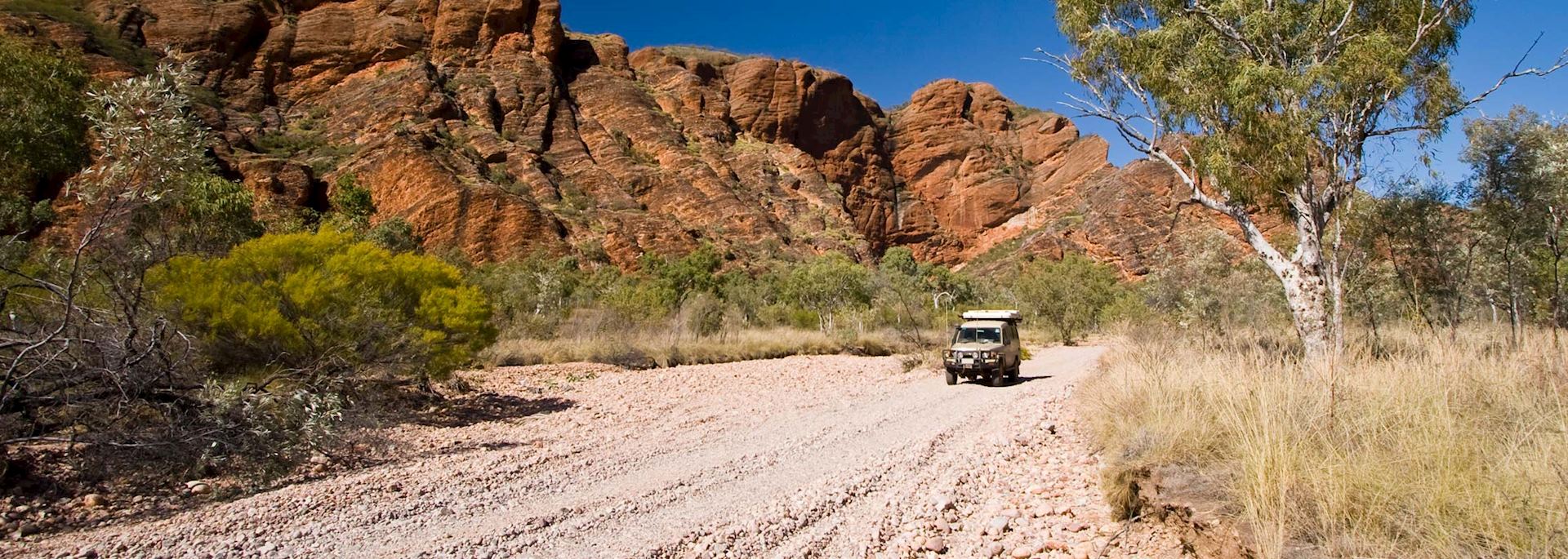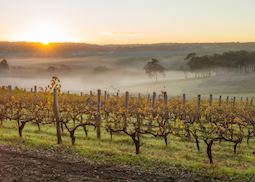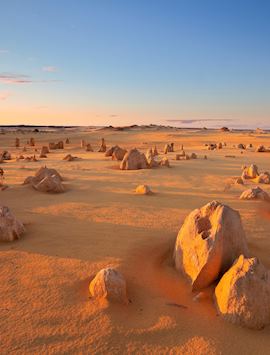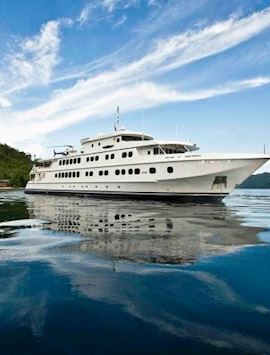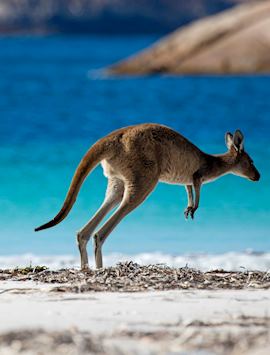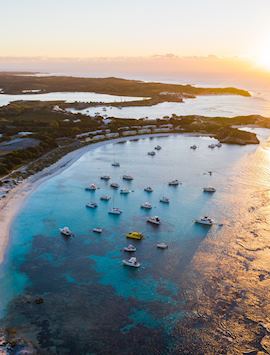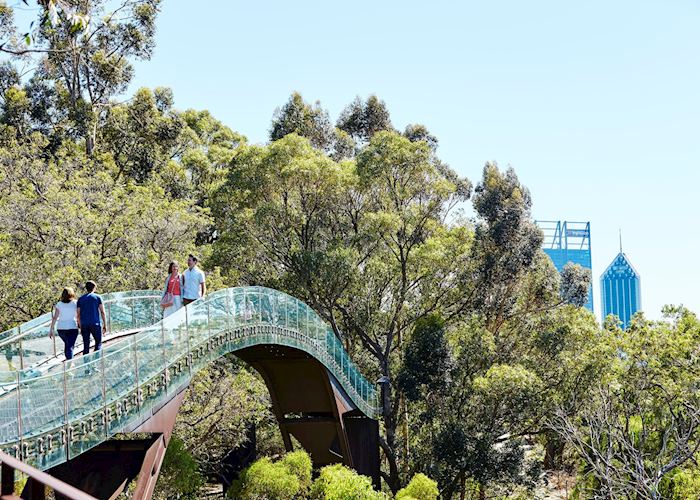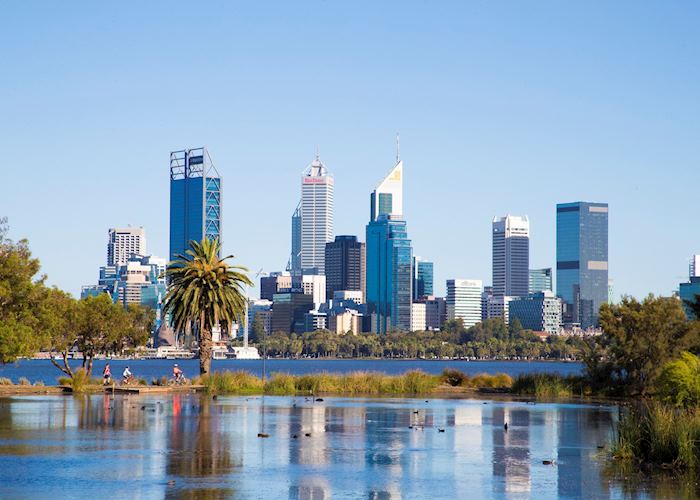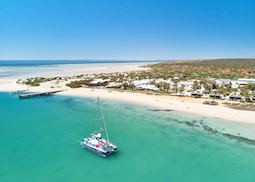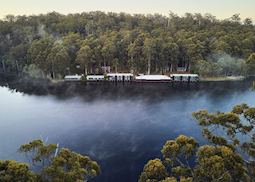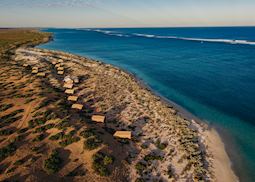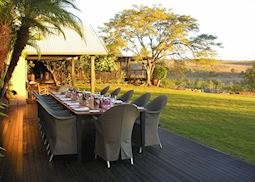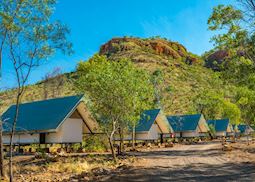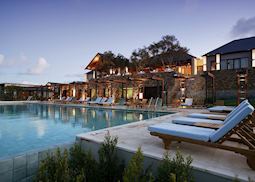Jump to:
Distances between towns stretch out in Western Australia, and time seems to slow down, much more than in other parts of the country. Over the years, this unspoiled, sparsely populated region has remained under the radar. But, as our specialists will tell you, there’s much to experience here, including four UNESCO World Heritage Sites. You can stop in offbeat towns with raffish convict backstories, such as Fremantle or Albany. There are the karri-forested winelands of the Margaret River region, and the rock formations of Kalbarri National Park. And, some of the area’s greatest treasures lie underwater: Ningaloo Marine Park is home to a healthy fringing reef that witnesses annual whale shark migrations.
Our specialists know Western Australia’s sights extremely well and can plan you a comprehensive tailor-made trip starting from the main gateway, the gleaming city of Perth. They’ll offer their recommendations for how to spend your time in and around the state capital (including its best beaches), but they’ll also encourage you to explore beyond the city. You could get a taste of the Outback on walking trails and canoe or boat tours through national parks such as Cape Range (a peninsula hewn with caves, canyons, and gorges). Drive through Nambung National Park with its otherworldly limestone pinnacles, or wind down completely in World Heritage-listed Shark Bay.
who's been there

Start planning your tailor-made trip to Western Australia by contacting one of our Australia specialists
-
617-223-4521617-223-4575
- Make an inquiry
Places to visit in Western Australia
Featuring heavily on our experiences of visiting Western Australia, these selected places are destinations that also prove consistently popular with our travelers. Our specialists can help you choose how to include them in your wider trip, based on your preferences.
Suggested itineraries featuring Western Australia
Our itineraries will give you suggestions for what is possible when you travel in Western Australia, and they showcase routes we know work particularly well. Treat them as inspiration, because your trip will be created uniquely by one of our specialists.
Places in and around Western Australia
- Albany Western Australia
- Cape Range National Park Western Australia
- Denmark Western Australia
- Fremantle Western Australia
- The Heartlands Western Australia
- Kalbarri National Park Western Australia
- Karijini Western Australia
- The Kimberley Western Australia
- Margaret River Western Australia
- Ningaloo Marine Park Western Australia
- Pemberton Western Australia
- Perth Western Australia
- Shark Bay Western Australia
- Nambung National Park Western Australia
- Broome Western Australia
- Derby Western Australia
- Cape Lévêque, Dampier Peninsula Western Australia
- Purnululu (Bungle Bungle) National Park Western Australia
- El Questro Wilderness Park Western Australia
- Kununurra Western Australia
Photos of Western Australia
Accommodation choices for Western Australia
We've selected a range of accommodation options for when you visit Western Australia. Our choices usually come recommended for their character, facilities and service or location. Our specialists always aim to suggest properties that match your preferences.
-
![Cruise at Monkey Mia]()
Monkey Mia Dolphin Resort
Shark Bay -
![RAC Karri Valley Resort Exterior, Pemberton]()
RAC Karri Valley Resort
Pemberton -
![Warders Hotel, Fremantle]()
Warders Hotel
Fremantle -
![Sal Salis]() Responsible ChoiceWe've hand-selected a range of tours and stays across the world that go above and beyond to be a force for good by supporting local businesses, educating staff, challenging local norms, or promoting conservation and biodiversity efforts. Your Responsible Choice helps increase the positive impact of your trip.
Responsible ChoiceWe've hand-selected a range of tours and stays across the world that go above and beyond to be a force for good by supporting local businesses, educating staff, challenging local norms, or promoting conservation and biodiversity efforts. Your Responsible Choice helps increase the positive impact of your trip.Sal Salis
Cape Range National Park -
![The Beach House at Bayside, Albany]()
The Beach House at Bayside
Albany -
![Dining at El Questro Homestead]()
El Questro Homestead
El Questro Wilderness Park -
![Emma Gorge Resort, El Questro Wilderness Park]()
Emma Gorge Resort
El Questro Wilderness Park -
![Cape Lodge, The Margaret River region]()
Cape Lodge
Margaret River -
![Pullman Resort Bunker Bay, The Margaret River region]()
Pullman Resort Bunker Bay
Margaret River -
![Smiths Beach Resort, Margaret River]()
Smiths Beach Resort
Margaret River -
![QT Perth, Perth]()
QT Perth
Perth -
![COMO The Treasury, Perth]()
COMO The Treasury
Perth
